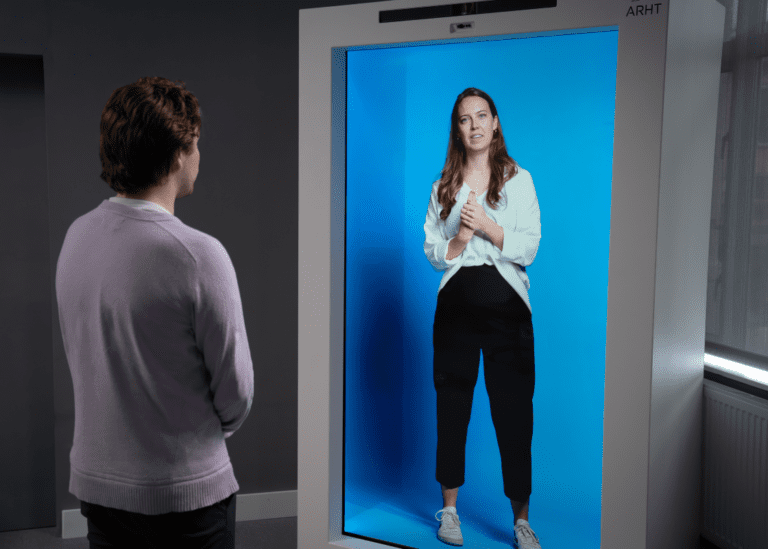
This article was written by Susan Fourtané on April 18, 2023 on the Fierce Education website.
Digital transformation and digitally-enhanced education are consistently trending in higher education. Technologies that once belonged exclusively to the science fiction realm have now become tools utilized by colleges and universities to assist hybrid and remote learning. Through holographic technology, lecturers can today give a masterclass in a university lecture hall across the globe without leaving their location.
The University of Southern California’s took its digital programs to the next level by launching the Digital Creative Lab (DCL), a facility where students can create and innovate in the digital realm from designing video games to producing high-quality videos for events. They count with 3D printing facilities and digital signage displays for showcasing the latest ideas and content. With the introduction of an NFT Gallery Space, University of South California (USC) students can display their own digital art on campus. This haven for creativity and innovation also decided to test out holographic technology as a way of improving student engagement and comprehension.
Believing that 3D holograms make it easier for students to understand complex concepts and retain information for longer, the USC partnered with ARHT to bring their CAPSULE solution into the classroom. The ARHT CAPSULE is a portable 4K touchscreen display which incorporates dynamic high-resolution 3D images that help to create a more engaging learning environment. The full-body LCD display counts with 2D and 3D depth-sensing cameras allowing for life-size human presentations.
“The ARHT hologram technology has significantly impacted the use of our revolutionary Digital Creative Lab by enhancing the learning experience and inviting collaboration,” said Dr. Joe Way, CTS, Director of Learning Environments Information Technology Services at the University of Southern California. “This capability provides a more immersive learning experience, making it easier for students to visualize complex concepts and understand them better,” he said.
According to Dr. Way, it improves student learning through creating interactive experiences in a realistic way. “Students learn better when they know the content is aimed at them, making the learning experience both fun and engaging.”
According to ARHT, they use holographic technology to capture and beam speakers from anywhere in the world into a CAPSULE in any university’s lecture hall across the globe as long as such university has a CAPSULE installed in their campus.
ARHT CAPSULE offers three different options to create an engaging learning environment:
- Live streaming: It attracts students’ attention in an active way, improving overall engagement with the topic
- Pre-recorded content: Any content can be looped while ARHT CAOSULE is idling. The pre-recorded option can be used to share information and provide updates
- 3D Touch interactive screen: This option delivers content and 3D presentations; it also allows students to interact with different elements to understand a topic better
The USC has one of these Capsules installed in their Digital Creative Lab. “The ARHT CAPSULE sits at the main entrance of this one-of-a-kind Digital Creative Lab and serves as a welcome canvas which we can use to create specific messaging depending on the event or messaging from USC leadership,” said Raj Singh, Manager of AV/IT Design & Engineering Information Technology Services at the University of Southern California. “The ARHT CAPSULE also allows our students to create their own holograms, which they can use to broadcast out, or remotely join via ARHT’s many studios spread across the world.
“With hologram technology, our students can now access educational content from instructors located anywhere in the world,” adds Dr. Way. “This is especially useful for distance learning and enables students to access subject matter experts who may not be available in their local area. ARHT CAPSULE allows students to experience real-world scenarios in a controlled environment,” he said.
“For example, medical students can explore surgical procedures on a holographic 3D model before going into the medical room, allowing them to learn and make mistakes without the risk of harming a patient,” says Dr. Way. “Last, our students are finding that creating content is an incredible way to develop practical application of the principles they are learning in the classroom.” For Dr. Way, the ability for students to own their educational experience in a creative way makes for better cognitive learning and improved student satisfaction.






